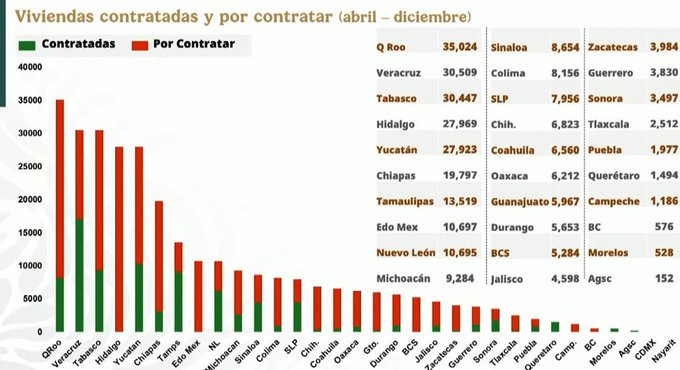The federal government, led by President Claudia Sheinbaum, launched an ambitious program to build 2.1 million homes for more than 40 million Mexican workers who earn less than two daily minimum wages (i.e., less than 556 pesos per day).
As part of this social justice strategy, the National Workers’ Housing Fund Institute (Infonavit) announced that it will build 301,000 homes in five priority states during 2025, marking the start of one of the largest social housing programs in the country’s recent history.
Quintana Roo, Veracruz, and Tabasco have the most projects
According to official information, the housing contracts were signed or are close to being signed between April and December 2025, with Quintana Roo standing out with 35,024 homes, followed by Veracruz (30,509) and Tabasco (30,447). Hidalgo (27,965) and Yucatán (27,923) are also listed as states with high construction volumes.
The main objective of this program is to guarantee access to decent housing for those who have historically been excluded from the housing market due to limited income or lack of access to traditional mortgage loans.
More than 20 states with fewer than 10,000 homes
Other states such as Chiapas (19,797), Tamaulipas (13,519), the State of Mexico (10,697), and Nuevo León (10,694) will also have significant participation. However, there are states where the figures are much lower, such as Morelos (528), Aguascalientes (152), and Baja California (576).
The project is part of a comprehensive policy to reduce the housing shortage, generate jobs in construction, and boost the local economy in different regions of the country.
You may also be interested in: The “Yes to Disarmament, Yes to Peace” program begins in Cuernavaca with the delivery of a historic World War II weapon
The goal of 2.1 million homes will be achieved during the six-year term, with a territorial approach that prioritizes areas where there is the greatest unmet demand for affordable housing and conditions of working poverty.

Source: elimparcial




